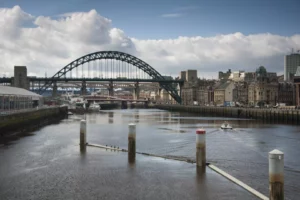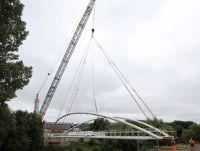A two-year routine maintenance programme on a bridge has recently completed – with hardly any impact on road users, according to Highways England.
A team of engineers began work on site on the Ouse Bridge on the M62 in Yorkshire in May 2018 and over the past two years they have replaced over 200 bridge bearings largely out of sight of drivers. The bearings support the bridge and allow it to move in a controlled way during changes in temperature and weather. The bridge parapets have also been completed.
Some of the methods employed to maintain the bridge included abseiling, crawling and diving. The Ouse Bridge was opened in 1976, the last section of the main part of the M62 which stretches east to west from Liverpool to Hull.
Highways England’s Chief Highways Engineer Mike Wilson said: “Our roads connect the country and everyday millions of people rely on our structures to get safely to their destination. We carry out thousands of inspections every year looking at all aspects of structures, from the condition of the paint through to the integrity of the materials. Considering all these assessments together helps us assess the overall maintenance needs, programme maintenance to reduce disruption and reduce the likelihood of emergency repairs.”
Highways England said it has a ‘rigorous inspection regime’ for all its structures. General inspections are undertaken every two years with more detailed principal inspections typically every six years involving close examination of all parts of a structure.
Most of the inspections and repairs take place overnight or underneath the structures, meaning that often drivers are unaware of the work. This can include abseiling down a bridge, examining tunnels and diving to inspect underwater parts of our structures.
Bridge engineers use a variety of techniques to ensure that the structures, tunnels and associated equipment are all in working order. Abseiling allows engineers to examine parts of a structure that are difficult to access, such as tall piers in river estuaries. Engineers can also examine bridges and tunnels by getting underneath the road surface to check the drainage systems are still functioning correctly. And where structures – like the Orwell Bridge are partially submerged, diving is required to complete the tasks.
Taking into account all of the available inspection and testing data, Highways England is able to plan its maintenance programme to ensure all its structures remain safe. As key elements of a structure come to the end of their serviceable life, maintenance can be carefully planned to minimise disruption for drivers.
Over the next five years, Highways England is planning on spending over £4.1 billion on the biggest renewals programme it has ever embarked on. The plans include the renewal of 170 bridges and other structures.




























